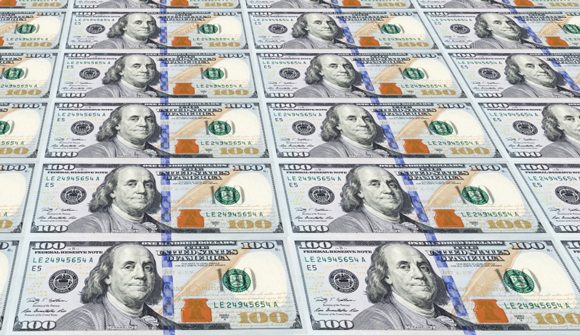
Republicans gutting Dodd-Frank as Wall St. goes subprime again … It is not mortgages but subprime car loans that U.S. banks are repackaging now for foreign investors … Teams of bank lobbyists [are] rewriting laws up on Capitol Hill these days … Little by little, these influence-buyers are gutting and filleting the Dodd-Frank Act, the package of bank regulations that was among the few big accomplishments of the Obama administration during the two years when Democrats controlled Congress. These lobbyists represent some of the same corporate villains whose greedy, in some cases criminal, machinations just about demolished the economy in 2008, tossing millions out of their jobs and impoverishing even thrifty and financially prudent citizens. – CBC
Dominant Social Theme: Regulations are necessary, especially when they last a long time.
Free-Market Analysis: This article is in line with what we've forecast in the past regarding regulation and asset expansions.
When markets crash, it is easy to create regulations to "address" the perceived problem. In fact, legislators often don't know or understand the problem, but they are willing to act to palliate the public perception that "something needs to be done."
However, when markets go back up and the regulations are getting in the way of potential profits, suddenly those recently passed regs don't look so good.
This is why it is likely not possible to reduce or eliminate market risk using regulations. Of course, regulations usually don't help address the perceived problem anyway. But the more markets improve, the less newly codified regulations may be seen as necessary.
Battalions of lawyers and lobbyists may be unleashed to reduce or remove the most significant regs, and thus even if the reg is by some chance addressing the intended issue, it may soon be whittled into insignificance.
Here's more:
Just seven years after so many people nearly lost everything, conservative lawmakers are hard at work dismantling those damned bothersome restrictions placed on banks to prevent a repeat of the great meltdown.
Late last year, Republicans refused to pass a larger spending bill unless the White House agreed to undo a section of Dodd-Frank that forced banks to move their risky derivative trades to units that don't enjoy taxpayer backing.
Then, when Congress reconvened this year under full Republican control, the very first order of business was once again the banks. This time, the aim is to let the big, federally insured banks increase their risk profiles. Super idea, that one.
The idea, clearly, is to get rid of all this Dodd-Frank stuff entirely, particularly the so-called Volcker rule, the law's centerpiece. It basically forbids banks to play risky games with their own cash reserves, which the banks are required to maintain in case things go sideways again.
Car loans at 35%
Think they won't? Well, Wall Street has already dived back into the stinking ooze of subprime lending, the financial weapon of mass destruction that blew up in 2008.
The article goes on to report that what has replaced repackaged loans of low-income housing are car loans.
The cycle is the same as in the early 2000s according to the article. Auto lenders find consumers with poor credit ratings and offer high-interest car loans. Various lending institutions package the loans (form them into securitized debt), manipulating the most risky of them by blending them with less risky loans. This securitized debt is then provided to investors around the world and proves attractive because of the high return.
This is similar to the subprime repackaging that was commonly held to have destabilized markets in the mid-2000s.
The article also points out that Fannie Mae and Freddie Mac are once again "approving down payments as low as three per cent." It concludes, sarcastically, "Consumers don't need protection, you see. The market provides that already. Really. It does."
We can see clearly that the debate over market risk has been confined mainly to regulation in this article. The sarcasm at the end emphasizes this point. No matter that endless commentary in the alternative media has focused on central bank money printing and excessively low short-term rates, we are supposed to believe that market crashes are a regulatory phenomenon.
Whether regulations are gutted or not is probably beside the point. Vast waves of money sloshing over financial facilities create the conditions for a market meltdown. As asset bubbles expand into the larger economy, the possibility of a market event becomes increasingly probable.
Regulation is not at fault, nor is it a panacea. Regulations that are passed after market events are often undone. And even if they are not undone, monetary stimulation will create conditions for market instability.
Over US$50 trillion has been poured into markets following the 2008-2009 market crash. And now, as we've reported recently, there are signs that further monetary coordination will expand current asset bubbles.
Regulation is a red herring. Keep your eye on monetary stimulation. The vast amounts of money being poured into the world's economy will likely have an increasingly significant effect. First will come a considerable – additional – boom. And then a bust.
If you are appropriately hedged and diversified you may be able to make money going up and coming down. Some people always do. But don't be fooled about the market mechanism.

If a global Wall Street Party is to take place, it will be built on the shaky foundation of money printing. And sooner or later it will collapse.
